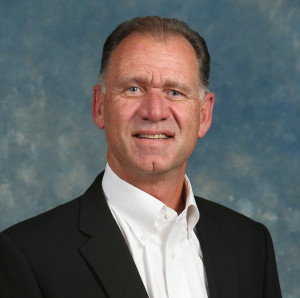 by John Galyen, President, Danfoss North America
by John Galyen, President, Danfoss North America
While energy efficiency remains at the forefront of trends impacting the HVAC/R industry, it’s not only efficiency that the industry – and country – needs to be thinking about. We also need to address energy productivity: increasing GDP while reducing energy use. In fact, the Alliance to Save Energy recently announced an initiative to double energy productivity by 2030 – a goal that could save the United States $327 billion annually in avoided energy costs, create 1.3 million jobs, reduce imports to a mere 7% of overall energy consumption, and lower greenhouse gas emissions by one-third compared to the level emitted in 2005.
Reaching this ambitious goal, however, requires collaboration between the public and private sector on four critical aspects.
First, it requires supportive regulations and standards. Industry already has demonstrated its capability to innovate and bring the right solutions to  market at a price the market will bear. Now we need regulations to set symbiotic and accessible new targets, and we also need a market-based approach to reach them. It is imperative that these regulations be supportive of industry and allow the private and public sectors to move forward collaboratively.
market at a price the market will bear. Now we need regulations to set symbiotic and accessible new targets, and we also need a market-based approach to reach them. It is imperative that these regulations be supportive of industry and allow the private and public sectors to move forward collaboratively.
Second, we need to redefine the grid-building relationship. Today as energy use continues to grow, especially during peak load events, fewer power plants are being built. To accommodate the shift, the way in which the power grid and buildings interact needs to change and, with that, the role of utilities will need to be reshaped. The new grid-building relationship will require recovery and reuse of energy, energy storage, and the deployment of renewable energy at the building and community levels. For the HVAC industry and its systems, which are a critical part of the load problem during peak periods, this means unleashing the potential of technologies that can be part of the solution, such as advanced load control and enhanced demand response capabilities. For example, variable speed air-conditioning equipment improves building efficiency, performance and comfort, and has the capability to help utilities address their peak demand concerns through new demand response initiatives that allow them to intelligently control the speed (power) of the unit during a peak event, with minimal impact on a building’s occupants.
Third, meeting the challenge of “doubling energy productivity by 2030” requires the use of the many available, proven – yet under-deployed – technologies. In the short-term, these technologies, such as variable speed, energy recovery and renewables, harbor significant potential for reducing energy use and improving productivity. This is especially true for existing buildings since only one percent of buildings in use today would qualify as new.
Take, for example, the fact that 70 % of the HVAC systems shipped today operate at the minimum regulated efficiency level, despite the fact that nearly every manufacturer offers systems that are at least 50% more efficient than regulations. This is an underlying problem that we need to overcome – shifting away from this focus on first cost and looking instead at the total lifecycle cost of the equipment.
Finally, we need to take a long-term perspective and look holistically at buildings. The market is approaching the technological limits of existing components – often referred to as ‘max tech’. This means the next level of efficiency will not come through significant energy efficiency improvements in individual components, but rather from an integrated system (or even sub-system) and building approach. We must adopt an integrated approach to whole buildings, communities of buildings, and the grid that serves them. It will require a new and holistic approach to R&D, building design, building codes, building labeling and ratings, financing mechanisms and a shift in utilities’ role. It also will require new tools to determine whole building performance, the integration of new system level performance ratings for equipment and the consideration of all aspects. In addition, there will need to be a greater focus on building commissioning and maintenance to ensure that system performance is optimized and the design efficiency is sustained.
The global trend lines for energy consumption point up – sharply. Relying on past practices will neither maintain the pace of energy productivity improvement achieved so far nor meet the energy and emission challenges ahead. The great milestones in business history are points of deep disruption – where technologies, products, and how business is conducted shifted dramatically. We need private and public sector collaboration to make the shift and the goal possible.
This blog originally appeared in Engineering Systems Magazine
